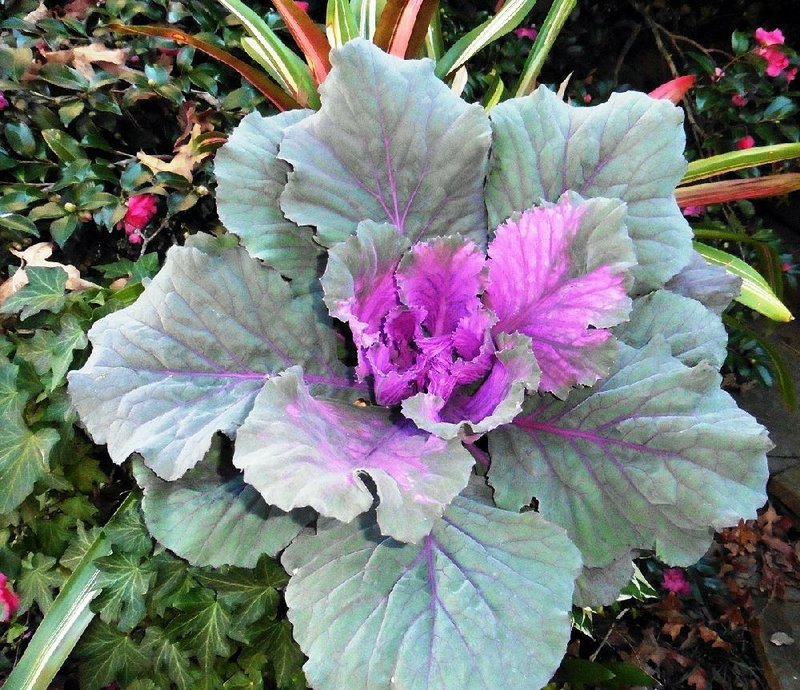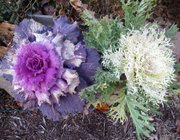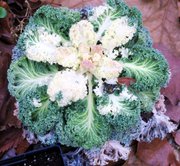FEBRUARY
We are halfway through winter, and it has been colder than normal. Not only has it been colder than we are used to, but the cold has lasted longer -- including one week we never made it above freezing. It has also been drier than normal.
Statewide, I am getting reports of damaged foliage on everything from gardenias and loropetalum to boxwood. Our winter annuals have not thrived in the cold weather, either. Some have done better than others. Pansies and violas struggle valiantly to rebound on warmer days, but the Swiss chard and giant purple mustard won't look good until spring -- if they come back.
• If you have winter annuals with damage, clean up the spoiled foliage, fertilize (on a mild day) and water if it gets dry.
• If the damage is on permanent plants in the landscape, ignore the dead or wilted foliage until new growth begins in the spring. Pruning them back now would remove any buffer the damaged leaves are providing. Hopefully the damage will be minimal and hopefully we won't have any more severe weather -- we can all keep our fingers crossed.
• Pay attention to forecasts, and if really low temperatures are predicted and we haven't had ample rain, water container plants and any newly planted trees or shrubs. If the plants are bone dry going into a hard freeze, they are more likely to suffer burned foliage.
• Late February is the time to start pruning fruit trees, blueberry bushes and grapevines. The quality and the size of the harvested fruit will be better if you know how to prune. Experts will explain how in a fruit-pruning workshop, 1-4 p.m. Feb. 15 at the University of Arkansas System Division of Agriculture's Fruit Research Station in Clarksville. Pre-register at (479) 754-2406 or email [email protected]. You can pay the $10 fee at the door.
• All roses need annual pruning, and it is recommended that you prune back butterfly bush (buddleia), summer spirea and ornamental grasses hard each year. Butterfly bush and summer-blooming spirea bloom on new growth. Cutting them back hard keeps the plants compact but covered with blooms. Ornamental grasses die back to close to the soil line each winter, so removing the old foliage makes way for new growth.
• If other summer-blooming shrubs need pruning, this should be done before new growth really kicks in. This list of shrubs includes crape myrtles, althea (rose-of-Sharon), Clethra (summer sweet), Callicarpa (French mulberry or beauty berry) and the Panicle hydrangeas such as "Limelight" or "Pinky Winky."
• Don't prune the big leaf hydrangeas unless all their new growth begins from the soil line. We hope they haven't been winter damaged so they can bloom for us this summer. There are many types of hydrangeas, and you need to know which you have to know when to prune.
• While most guidelines say to wait until the end of February to prune plants that need pruning, use common sense. We have had some late springs with wintry weather when we didn't get around to pruning until March. Late pruning is not going to kill a plant.
• By mid-February we can begin to plant the cool-season vegetables. Cool-season gardening lasts from February through mid-April. English and snap peas are the most cold hardy, followed by greens, then the Cole crops -- cabbage, broccoli, Brussels sprouts and cauliflower. Transplants should begin appearing in garden centers later this month. Greens, spinach and carrots can be planted from seeds. Onion sets and transplants, along with seed potatoes, will appear at the end of the month.
• If you did a good job of covering any fall or late-planted vegetables, you should be harvesting now. If you did not cover, you probably need to replant.
• Spring bulbs are beginning to make an appearance, albeit a bit later than last year. Crocuses and early daffodils have been blooming by now in years past, but I haven't see any signs yet. It won't be long. After that come hyacinths, tulips and then flowering onions. When you see flower buds emerging in your foliage, that is the time to put out some complete fertilizer to aid in bud-set for next year. Remember to keep the foliage happy and healthy for at least six weeks after bloom.
PLANT OF THE MONTH
Ornamental cabbage and kale (also known as "flowering" cabbage and kale) are in the same species as edible cabbage, broccoli and cauliflower.
While ornamental cabbage and kale are edible, they tend to have a bitter flavor and so are often relegated to garden ornament status.
Technically, ornamental cabbage and kale are all kales (kales produce leaves in tight rosettes while cabbages produce heads). In the horticultural trade, "ornamental kale" is the term used for plants with deeply cut, curly, frilly or ruffled leaves, while the broad, flat-leaved types are typically called "ornamental cabbage."
Ornamental cabbage and kale grow approximately a foot wide and 15 inches tall.
They can give us a lot of winter color in shades of pink, purple and white from fall through spring, depending on the winter weather. In some parts of the state, this cold season has taken a toll and the plants are not very attractive, while in some parts they have taken a little hit but are still growing strong.
If they are doing well, they typically begin to stretch or get leggy as temperatures rise in the spring, and then begin to produce some straggly yellow blooms, which signal the end of their growing season -- if Mother Nature didn't end it sooner.
Janet B. Carson is a horticulture specialist for the University of Arkansas Cooperative Extension Service.
HomeStyle on 02/03/2018



